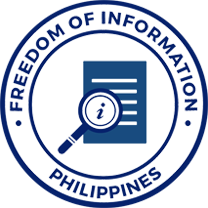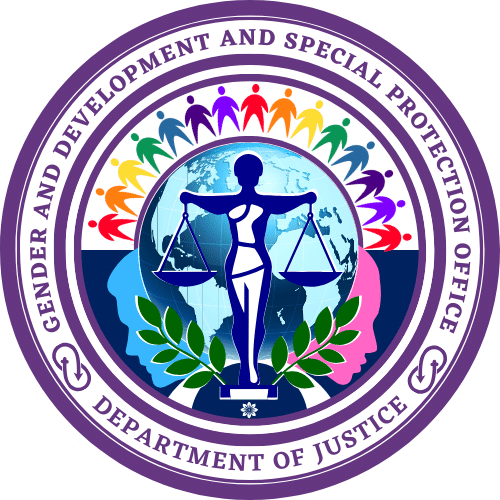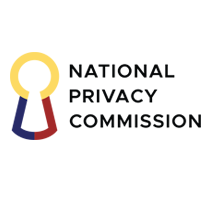The Logic and Pragmatism of the New Rules
Launch of the New Rules on Civil Procedure and on Evidence
20 August 2020
Hon. Menardo I. Guevarra
Secretary
Department of Justice
Mr. Chief Justice, Honorable Justices of the Supreme Court, members of the Bar, fellow workers in government, ladies and gentlemen --
The Court counts among its powers the power to promulgate rules concerning pleading, practice and procedure.
The drafters of the 1987 Constitution recognized that this inherently judicial power equally inheres in the legislature.
However, between the two great branches of government, it is perhaps the judiciary that possesses such intimate knowledge of how the rules of pleading, practice and procedure affect and impact the lives of our people.
It is in courtrooms, before judges, where the travails and pains of the people are laid bare and examined to the minutest detail.
Such intimacy generates a wellspring of knowledge that informs judicial understanding of how individuals and their lawyers seek to enforce rights, or to evade obligations, that arise from human conduct.
This understanding, gained from years of daily interaction with litigants and advocates, forms the bedrock upon which emanate the many changes to the rules on civil procedure and evidence.
At face value, the changes may appear to be merely technical.
But highly technical as they are, the rules that comprise the corpus of what we know as remedial law considerably determine what and whose rights may be enforced, and how.
They significantly affect substantive rights.
These rules are important barometers of how our people experience and attain justice.
Any change in these rules therefore deserves not only our attention.
Any change in these rules demands our collective scrutiny.
A careful examination of the amendments to the rules on civil procedure and evidence must hurdle not only the test of logic; it must likewise pass the test of pragmatism.
Logic is undoubtedly an important ingredient of any rule.
At the very least, rules that contradict logical thought and reasoning will invite insurmountable criticisms from the bench, the bar, the academe, and every other stakeholder in our justice system.
But rules cannot rely on internal logical consistency alone.
They must likewise be implementable, and in their implementation yield results that are consonant with the objectives of the judicial establishment and the demands and expectations of the people for which the establishment in the first place exists.
On both tests for logic and pragmatism, the new rules pass, and pass with flying colors.
Take, as examples, the amendments to the rule on service of summons, and to the rule on evidence which requires the presentation of the original of a document.
The old rules on these are based on parallel logic.
The party that the initiates suit assumes the burden of facilitating the court’s acquisition of jurisdiction over the person of defendant.
In much the same way, the party that presents documentary evidence whose contents are in issue assumes the burden of presenting its original.
As the number of civil complaints that get archived because of failure to serve summons increased, the need to examine the logic behind the rule could no longer be ignored.
In criminal cases, strict rules for bringing an accused in court are justified because of the Constitutional guarantee against deprivations of liberty without due process of law, and the presumption of innocence accorded such accused.
These considerations have no meaning in civil cases.
The change in the rules that now facilitates acquisition of personal jurisdiction is therefore a correct step towards strengthening the faith of litigants in our civil proceedings.
And then there was the difficulty that used to arise in the presentation of documentary evidence.
The rule that required the presentation of the original of a document is probably the most used and abused ammunition in a lawyer’s arsenal of technical rules.
The old rule was theoretically sensible: the party who presents documentary evidence must produce its original when its contents are in question.
This was to afford the court and litigants the opportunity to inspect and verify the authenticity and genuineness of a document.
In reality, however, the old rule has been frequently used to cause delay in court proceedings, and to render difficult the ascertainment of the truth.
As a result, the old rule has become a seeming insurmountable impediment for a party proving his case.
The old rules on the acquisition of personal jurisdiction in civil suits and on the presentation of the original of a document have had the unintended effect of unduly raising the barrier in the enforcement of legal rights.
We can only speculate on the adverse impact that these old rules have generated – from economic losses, to losses not even susceptible of pecuniary approximation.
However, the most troubling loss that these old rules have generated may very well be the erosion of our people’s trust in our courts to serve justice promptly.
The new rules that relax the court’s acquisition of personal jurisdiction in civil cases, and that re-assign the burden of proving inadmissibility to the party who assails the veracity of a duplicate document, are novel, if not revolutionary, amendments.
These amendments are expected to significantly reduce technical objections, and remove rules-based constraints which delay the resolution of cases.
These, and many other changes introduced under the new rules on civil procedure and evidence, plug loopholes which have been customarily used to unduly prolong and delay litigation.
The amendments introduced by the new rules are many and noteworthy.
But there is one change that will predictably be more contentious than the rest – the rule that accords greater significance to a lawyer’s signature.
The new rule now makes explicit what once was merely implied: that a lawyer’s signature in a pleading attests to his or her personal estimation that its contents are true and are supported by evidence.
The greater significance accorded to a lawyer’s signature is not merely reflective of the stature of the entire profession in the public’s estimation.
More importantly, it is an affirmation of the ethical rules that declare every lawyer (as) an officer of the court and which burdens each of us with a duty to the society-at-large.
In a sense, it recalibrates a lawyer’s duty to client on the one hand, and on the other, his fealty to the law and to the truth.
By placing the lawyer’s name and repute on the line, the new rules
serve as a constant reminder that lawyers ought to serve clients only to the extent permitted by the law and within the bounds of legal ethics.
Mr. Chief Justice, ladies and gentlemen –
There is no question on the logical soundness of the old rules.
But the practice in the past decades has brought to the fore how the old rules have been exploited by those in the profession who derived benefit in making the quest for justice cumbersome and more difficult.
It is these practices that provide the most compelling argument for the changes in our rules.
For in the end, the faith and confidence of the public in our justice system rest less on an evaluation of the internal logic of rules, as it does on how they affect and impact the everyday lives of people.
We therefore owe our gratitude to the committees headed by no less than yourself, Mr. Chief Justice.
The knowledge and wisdom that you and the members of the revision committees have shared were the instrumental guiding force in the drafting of these new rules.
These rules are embedded not only with a deep knowledge of the law of their drafters.
In these rules are reflected the unmistakable depth of insight of those who not only teach the law, but who also see and observe firsthand how rules have been used and abused by litigants, lawyers and the public at large.
In closing, while we entertain no doubt that the more enterprising members of our populace will in time find ways to undermine the innovations and ideals embedded in these new rules, we remain confident that lawyers and legal philosophers of the future will, as we did, successfully thwart those attempts.
May they find inspiration in how, in the crafting of these new rules, we have made manifest the extent to which the court’s power of promulgating rules of pleading, practice and procedure, can be wielded to champion justice and our people’s faith in it.
Thank you and have a Covid-free day!








